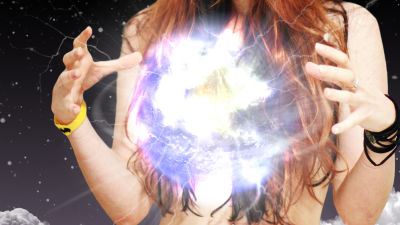How does NASA create images of beautiful universe and stars using Photoshop?

ByRandi Boice
In a word saying "Take a picture", it is the photograph of the universe and the star that does not complete by just cutting the shutter of the camera like a normal photography. A high resolution beautiful space photograph released by NASA is made by a special scientist who acquired knowledge of astronomy while acquiring Photoshop skills, but what is actually done at the space photography creation site It is released by Adobe which is the developer of Photoshop.
How Photoshop Helps NASA Reveal the Unseeable
http://blogs.adobe.com/conversations/2015/09/how-photoshop-helps-nasa-reveal-the-unseeable.html
In January 2015, it orbits the orbit about 600 km above the groundHubble Space TelescopeCaughtAndromeda galaxyA picture of it has been released. As hundreds of millions of stars float in huge images, the more you zoom in on the image, the more you can see the beautiful universe in detail.
You can check the image of the beautiful Andromeda galaxy from the following.
Hubble captures most detailed image ever seen of Andromeda galaxy - ABC News (Australian Broadcasting Corporation)
http://www.abc.net.au/news/2015-01-21/hubble-high-resolution-view-of-the-andromeda-galaxy/6027732
This is a picture of the Andromeda galaxy. When you press the zoom button on the upper left of the screen ... ...

The picture is zooming in and out.

It is possible to see even the details as follows.

When I hear "photographs taken of the universe", it appears to me that taking pictures with photos and smartphones at the head, but photography of the universe as above is not that easy. For example, Mars probeMars RoverIf an image is sent from the earth to the earth,Jet Propulsion Laboratory(JPL)Scientists need to make use of astronomy knowledge and image editing techniques to recreate the RAW data sent to people in a manner that is easy for people to see.
Currently, software to process digital images exists like a mountain, but in fact it was JPL 50 years ago to develop a tool to process digital images for the first time. And JPL's technology has undergone various advances, and now we are using "Adobe Photoshop" etc. which is familiar to the general public for image editing.
Although Mars Rover will take photos while running, it is not easy to produce one big picture from multiple photos, as the ground is decorating on the ground. In addition, Mars Rover regards "focusing" as the most important matter in photography, and it is secondary to adjust the exposure according to the brightness of the shooting location. For this reason, JPL scientists need to crop photos in Photoshop, rotate them, connect images in a seamless state, and then adjust colors.

Mars Rover's camera works like a human eye, synthesizing images captured from two perspectives to create a single image. For that reason, things like 3D color photos are rather easy to create with Photoshop, but on the other hand it is very difficult to create a huge one image by sewing together a number of images taken in succession It is getting. Since the visual impact is lost for pictures where seams are obvious, scientists who do image editing need to use camera models andTie PointWe will use a special method using the editing to make the image appear stereoscopically. And as long as a mosaic image that looks like a single image finishes, it adjusts the brightness deviation caused by dust and sunlight with Photoshop.

Of course, the most important thing in photographs taken of the universe is "beauty" rather than "scientific perfection" and the image of the universe is attractive even before image processing is done, but in Photoshop By doing editing, the finishing as a work is improved more.
Work at the California Institute of Technology's infrared processing and analysis centerRobert HeartIs also one of the visualization scientists with knowledge of astronomy and Photoshop technology. He spends most of the day spent processing infrared images received from the Spitzer Space Telescope and the wide area infrared exploration satellite.

Heart, who plays a role in simultaneously executing science and art, said, "IScience communicationIt is responsible for overseeing visual aspects. Many work is to render the images collected from the Space Telescope to high quality photographs that are useful for both the public and astronomers using Photoshop, "explaining his work.
You can check how the monochrome image actually sent from the space telescope changes to a beautiful photograph by taking advantage of the Photoshop layer and contrast adjustment etc. from the following GIF animation.

When decomposing the above animation image it looks like the following. The upper left is the original image and the lower right is the completed image. Through editing Photoshop, images that look just like clouds are transforming into images of the beautiful universe of the nebula.

In addition, the following three images were synthesized by taking the image captured by the Spitzer Space Telescope and the Hubble Space Telescope the best on the left, the image captured by the Spitzer Space Telescope alone in the middle, the Hubble universe on the right Image captured by telescope alone. In this way, Mr. Hart sometimes produces high-quality images by combining two separate photos taken at the same place.

Heart 's work is basically the same as a general Photoshop craftworker, but there is a danger that Heart is going to erase scientific facts with a process of moving an airbrush. Therefore, Mr. Hart says that all the layers that have been made are saved so that trace can be traced when erasing the fact by mistake. Being able to draw a line between "removing rubbish" and "leaving scientific facts" is a role of a visualization scientist, unlike a general Photoshop artisan.
Related Posts:
in Science, Posted by darkhorse_log







